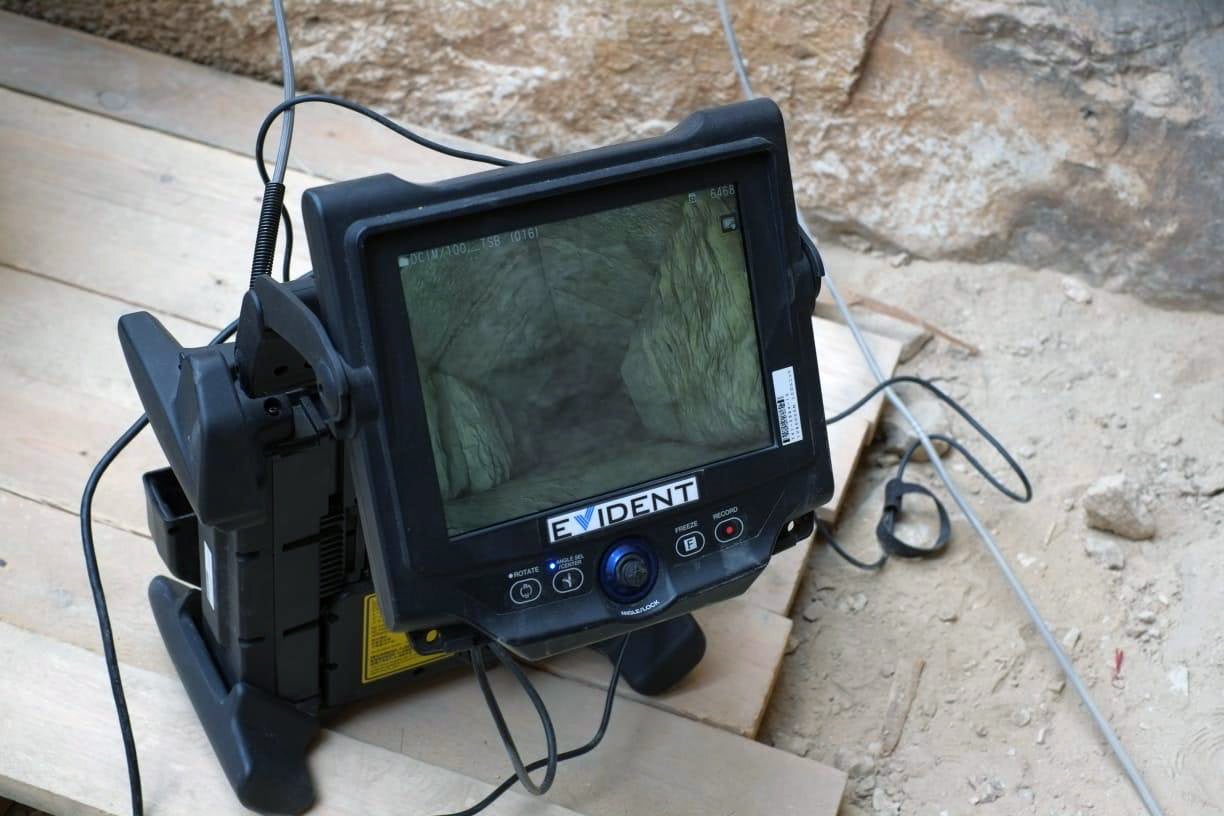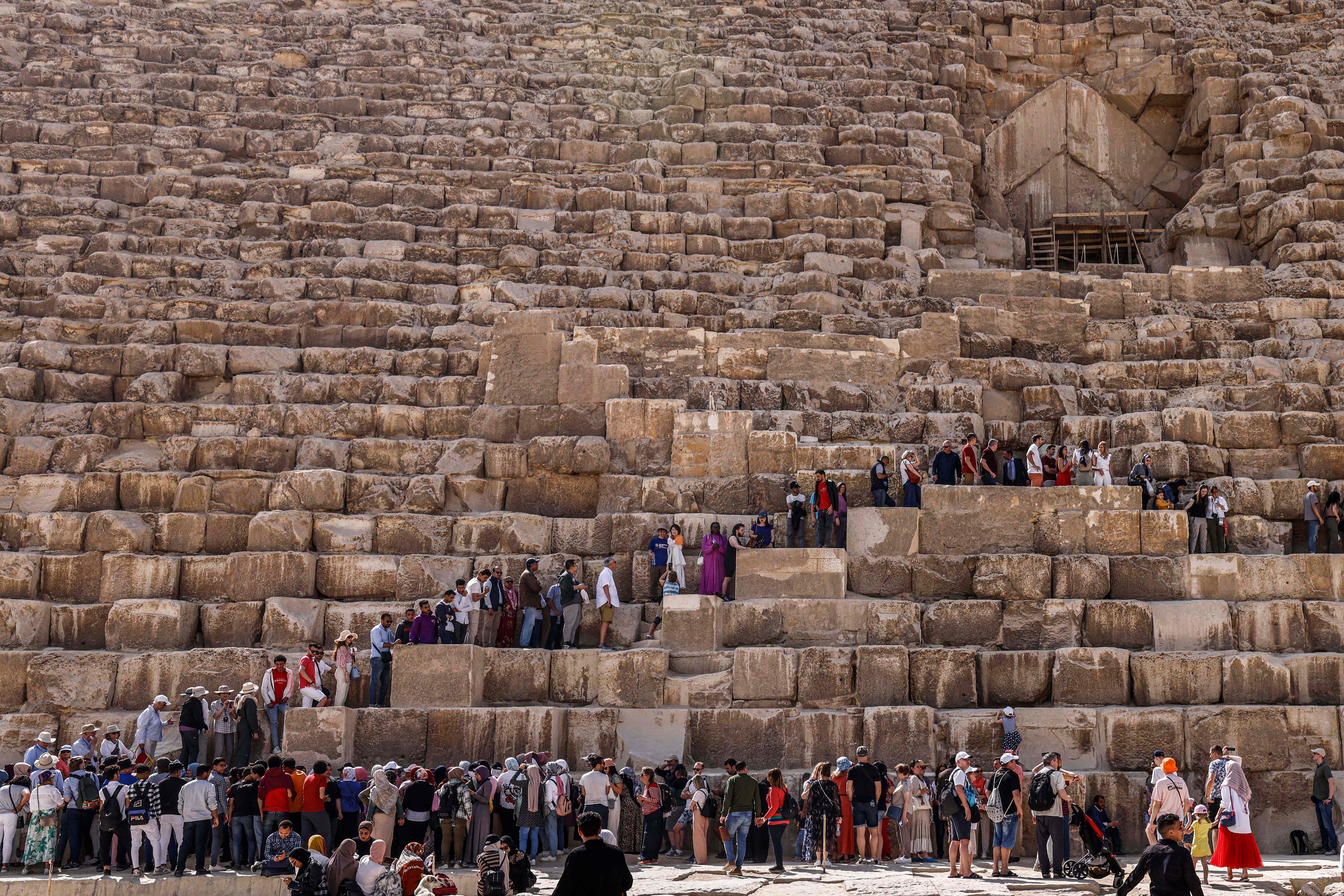
A 30ft-long hidden corridor discovered close to the main entrance of the 4,500-year-old Great Pyramid of Giza could lead to further findings, Egyptian officials said on Thursday.
The space, perched above the main entrance, was detected as part of a years-long scanning project that has been using non-invasive infrared thermography technology to “see” inside the structure.
The unfinished corridor was probably created to redistribute the pyramid’s weight around either the main entrance now used by tourists or around another as-yet undiscovered chamber or space, said Mostafa Waziri, head of Egypt’s Supreme Council of Antiquities.
“We’re going to continue our scanning so we will see what we can do ... to figure out what we can find out beneath it, or just by the end of this corridor,” he told reporters.
An article published in Nature said the discovery could contribute to knowledge about the construction of the pyramid and the purpose of a gabled limestone structure that sits in front of the corridor.

The Great Pyramid was constructed as a monumental tomb around 2,560BC during the reign of the Pharaoh Khufu, or Cheops. Built to a height of 479ft, it was the tallest structure made by humans until the Eiffel Tower in Paris in 1889. It is the last surviving wonder of the ancient world.
Cash-strapped Egypt often publicly touts ancient discoveries to attract more tourists, a major source of foreign currency since political turmoil and violence that followed a 2011 uprising.

Scientists detected the corridor through cosmic-ray muon radiography, before retrieving images of it by feeding a 6mm-thick endoscope from Japan through a tiny joint in the pyramid’s stones.
In 2017, researchers announced the discovery of a void – the first major inner structure found since the 19th century.

Experts are divided over how it and other pyramids were constructed, so even relatively minor discoveries generate great interest.







